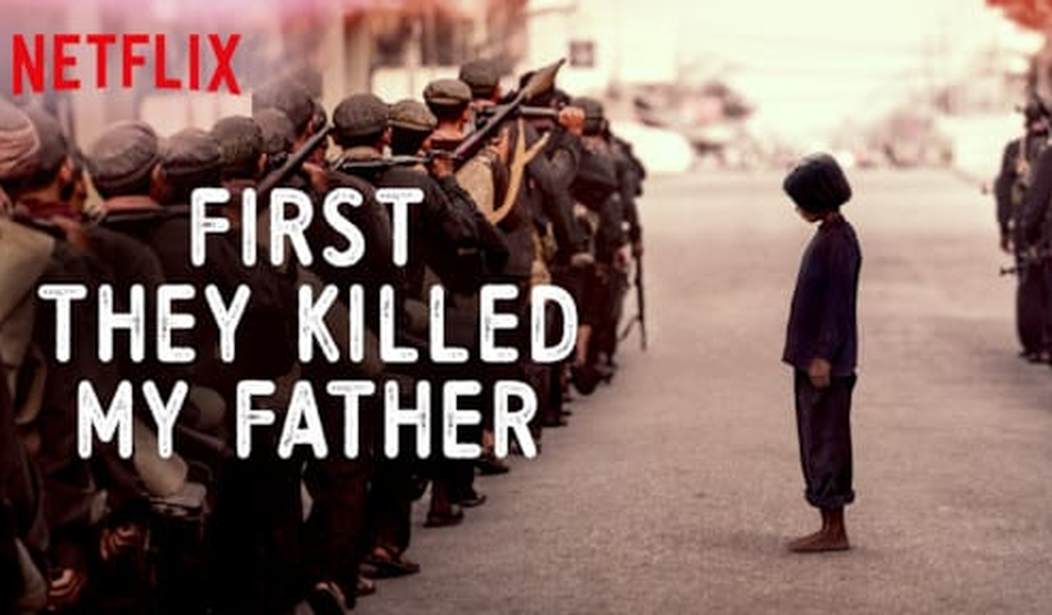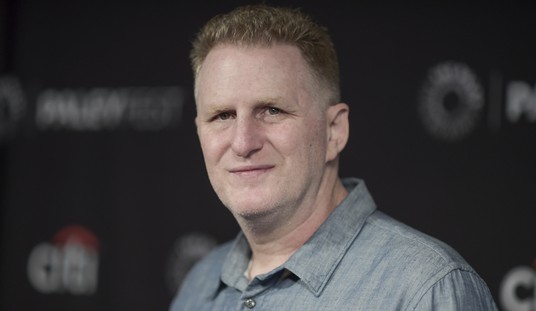The poorly-organized militias easily took control of the city streets. There was no resistance. Right after that, they sorted people out according to who they worked for, how rich they were. They broke up families and took their property away, in the name of making everyone “equal.”
Then the street executions followed. And more followed them. Millions more.
Ordinary people who had been living ordinary lives suddenly found themselves ruled by these young, unelected militias who openly hated and loudly denounced everyone who disagreed with them. They forced children into labor or warfighting, while the old were ostracized, marginalized, or killed.
It was Year Zero, but to the rest of the world it was 1975 and the place was Cambodia, though it’s happened in one guise or another elsewhere, wherever socialism, communism, and national socialist variants have taken hold.
First They Killed My Father tells the story of Luong Ung, a happy five-year-old girl in Phnom Penh. Her father was a high-ranking government official. Her family was Cambodian upper middle class up until April 1975. Then the Khmer Rouge swept the government aside and destroyed all in their path in the name of imposing Marxism with a Cambodian twist — the “Khmer” being the nationalist brand to the “Rouge,” meaning “red” for communism. The clever grafting of racial identity with communism set Cambodia on a terrible path.
First They Killed My Father debuted three years ago this week, though you’ve probably never heard of it despite the major star who co-wrote and directed it. More about that later. It received overwhelmingly positive reviews but no buzz. It’s currently available on Netflix, which funded it.
It’s a worthy companion to the multiple Oscar-winning The Killing Fields, from 1984, which I recently reviewed. Both films cover the same story but from very different angles. The former captures the Khmer Rouge’s reign of terror mostly from an American perspective, though its principal survivor is a Cambodian journalist. This film sees Cambodia’s communist holocaust through the eyes of a little girl caught up in the terrible events. Her bewilderment pulls the viewer right down with her through the jungles and into the mud on the collective farms and paramilitary training camps.
First They Killed My Father’s perspective brings a stream-of-consciousness that keeps the story moving despite the heavy content and sparse dialogue. There are no expository scenes after the opening sequence, no journalists or generals explaining the story to establish the location or even the time. The audience knows what Luong knows. This forces the viewer to pick up the details and make sense of events as they happen along with her.
In one scene, as beret-wearing revolutionary teachers clad in drab green indoctrinate children, the camera subtly sweeps up to spy photos of Stalin and Lenin hanging above the outdoor classroom. They’re nailed there, these two fathers of mayhem, but not spoken of, as if passively observing what they have unleashed on the world.
In another scene, the siblings wander through the jungle and happen upon a beheaded Buddha statue. No one ever says the Khmer Rouge did this or why, leaving the viewer to notice and make the connection. In another scene, as Luong and her siblings flee an attack by the Vietnamese military on their camp, the viewer only picks up the fact that they may have found some semblance of safety, however short-lived, because the soldier waving them on is speaking Vietnamese instead of Khmer and he lacks the trademark checkered scarf.
Why Couldn’t What Happened In Venezuela Happen Here?
First They Killed My Father is based on a true story and was shot in Cambodia using all local actors speaking in their native Khmer. It’s subtitled throughout. There are no Hollywood stars; most of the story is carried on the shoulders of seven-year-old actress Sareum Srey Moch. Her mostly unemotional performance conveys the confusion and numbness her real-life counterpart — Luong Ung, on whose memoirs the film is based — must have felt as the Khmer Rouge destroyed her life and forced her into servitude and warfighting.
It’s to Netflix’s credit that it funded the film and allowed the production to go forward as it did. Netflix was the only place the filmmakers pitched it, and the streamer bankrolled the $24 million film with no restrictions on the production. This meant the movie could be made as authentically as possible, on location and with local actors in their native language.
Luong Ung shares screenplay writing duties with none other than Angelina Jolie. Jolie co-wrote the screenplay and produced and directed First They Killed My Father. Jolie delivers brilliant performances across this film, most notably in the direction. The locations, the mostly hand-held cinematography, the spare score, and the acting all make this almost forgotten story all too real.
But when the film debuted in 2017, critic Mark Zoller Seitz trolled Jolie because of her race while praising her work:
Jolie is certain to be criticized for being a rich white American directing a film about Cambodian genocide, and not without cause, but it’s also obvious that she’s done everything possible, short of not directing the movie, to remove herself from center stage, put the spotlight on her heroine, and keep it there.
Why shouldn’t Jolie direct this movie? It tells a story she cared about and developed for fifteen years, as she learned about it from her friend Luong Ung, who lived it. She should hand the production to someone else just because she’s successful and white?
Three years later, that paragraph hasn’t aged well, though the idea behind it has gained traction. Jolie should be commended for taking this story on, when it clearly would never earn her much if anything at all. She took it on because it’s important to get this story in a medium and channel where it may be seen.
Seitz played for a woke audience to shield himself from praising a rich white woman for making a movie that criticizes communism. Jolie here is more than up to the task. Her uses of camera and color, especially in the few scenes that flash back from the awful present to better times before the communist takeover, are brilliant.
Important as a story and remembrance when it was released in 2017, First They Killed My Father is even more important as a warning now.
It earned numerous awards in 2017, as it deserves. But in today’s Hollywood, with the Academy’s new rules, would it even be eligible for the Best Picture Oscar? Its Cambodian cast is not diverse enough, nor is its production crew. There are no LGBTQ characters here, just children trying to survive the worst that humanity can devise, brainwashed revolutionaries, and anonymous figures and soldiers. The new arbitrary quota system may render this film and the last winner, Parasite, with its Korean cast and crew, ineligible. What about 2008’s Best Picture winner, Slumdog Millionaire? The Khmer Rouge would approve of the logic. Imposing injustice in the name of false equality to serve propaganda as a means to power aligns with their thinking.
As we see statues toppled, vandalized, and beheaded in streets given over to rioting mobs now, the ghost of Pol Pot is there. As people set about burning the books of J.K. Rowling and denouncing every single thing that came before them, the Khmer Rouge is there too and it should remind us of other sinister moments in history.
Is This a Scene From Nazi Germany? No, It’s the Portland ‘Peaceful Protesters’ Burning Bibles
When noted historians throw statues under the bus, meekly acquiescing that “Well, toppling statues is history too,” this is a grave problem. They’re helping erase the history that we must know to understand, if for no other reason than to avoid the mistakes of the past.
The Khmer Rouge, little known to most Americans, ruthlessly judged its forebears — toppling and beheading their statues, crushing gender in favor of revolutionary androgyny, intentionally destroying families, society, and culture to remake it all in their own image. Sound familiar?
America’s schools are teaching wokeness and socialism now, in the guise of a false “equality.” Are they teaching where these bad ideas lead? Evidently not. Millennials and Gen Z aren’t getting educated, to the point that too many of them have little or no understanding even of the Nazi holocaust. They have no idea the Khmer Rouge even happened, or that Venezuela is happening — and most importantly, why.
Instead of teaching wokeness, schools must show First They Killed My Father and Mr. Jones, two recent films that tell the truth: that socialism is slavery and its lofty promises are terrible lies.









Join the conversation as a VIP Member